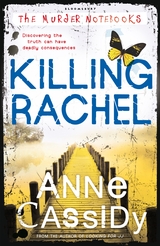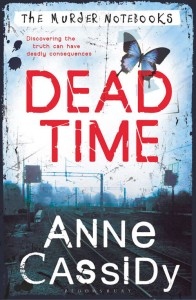The kind of young adults I write for are those who are a little bit like I was when I was a teenager. I call them the aliterate. They can read but they don’t particularly want to. For me reading was associated with dusty class readers that came out year after year. Reading was history text books, catechism, maths problems, science experiments. Reading equalled school. I never saw reading as something you could do for pleasure.
From time to time I read a book that someone recommended or a book that I wasn’t supposed to read (adult). I wasn’t a serial reader. I was a random reader, picking up odds and ends here and there. As an adult I bought beach reads when I went on holiday; I was a bikini reader. I read a book that was hyped up or made into a film; I was a groupie reader. Someone I admired was reading a classic. I had a go; I was a pseudo intellectual reader.
Then I found crime fiction. A story that started on page one, with twists and turns and a resolution that surprised. Inside the covers of a crime book I found so much more than just crime. The lives of ordinary people explored, described, commented on. Raymond Chandler wrote ‘…down these mean streets a man must go who is not himself mean, who is neither tarnished nor afraid. He is the hero; he is everything… … He must be the best man in his world and a good enough man for any world’.
A good crime book puts the reader in the position of this ‘man’ going down the mean streets of life. The reader has to think about right and wrong, good and bad, crime and punishment.
So I write crime stories that I hope are page turners. I want that aliterate reader, that teenage girl or boy, to be lured into my books with the promise of a juicy murder and the twists and turns of the detective figure trying to put the world to rights.
My new series The Murder Notebooks is like this. There are four books (two published, Dead Time and Killing Rachel). At the beginning of this series the world is turned upside down for step-family teenagers Rose and Joshua.
Their parents go out for a meal and they never return. Rose is sent to live with her grandmother, Joshua with an uncle. Five years later they meet up and decide to find out what happened to them. During the course of the four novels the concept of murder is examined. Is murder ever right? This is the question that will be asked by Rose and Joshua over and over.
The stories are played out against a variety of backgrounds; north London college life, Norfolk boarding school, the culture of bullying in a boys’ school in Newcastle, the streets of the West End of London where the police are not who they seem and life, apparently, is cheap.
Rose, like the reader, has her preconceptions about her mother and the life she has lived turned upside down. This is what a good crime novel can do.
When I visit schools to talk to students about the crime genre, I tell them about my stories and I ask them If you were in that situation what would you do? I think teachers could use crime fiction like this; not as a class reader but as a trigger for discussions on the complexities of morality. Rose is appalled by murder but throughout the books Joshua is hardened and in book four we find him with a gun in his hand. Maybe, your students might have opinions about whether Joshua should use it or not.
Killing Rachel, the second in The Murder Notebooks series, is now available in paperback and ebook priced £6.99. Published by Bloomsbury.




